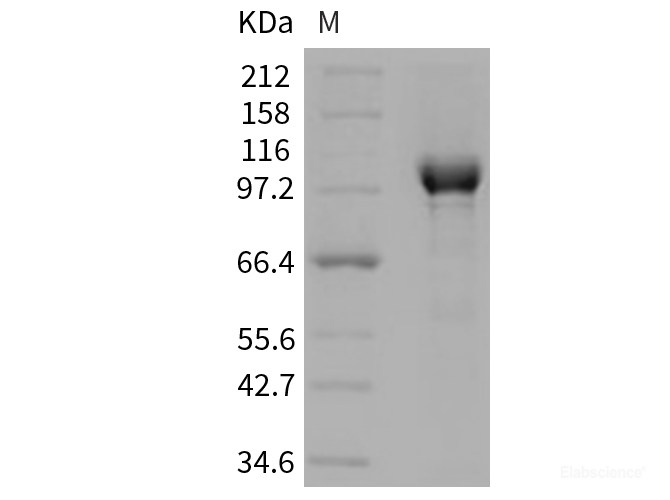Background
Poly (ADP-ribose) polymerase 1(PRAP1), also known as NAD(+) ADP-ribosyltransferase 1(ADPRT), is a chromatin-associated enzyme which modifies various nuclear proteins by poly(ADP-ribosyl)ation. The ADP-D-ribosyl group of NAD+ is transferred to an acceptor carboxyl group on a histone or the enzyme itself, and further ADP-ribosyl groups are transferred to the 2'-position of the terminal adenosine moiety, building up a polymer with an average chain length of 20-30 units. The poly(ADP-ribosyl)ation modification is critical for a wide range of processes, including DNA repair, regulation of chromosome structure, transcriptional regulation, mitosis and apoptosis. PARP1 is demonstrateed to mediate the poly(ADP-ribose) ation of APLF (aprataxin PNK-like factor) and CHFR (checkpoint protein with FHA and RING domains), two representative proteins involved in the DNA damage response and checkpoint regulation. Further, It has been suggested that DNA-dependent protein kinase (DNA-PK), another component of DNA repair, suppresses PARP activity, probably through direct binding and/or sequestration of DNA-ends which serve as an important stimulator for both enzymes. PARP1 inhibitors is thus proposed as a targeted cancer therapy for recombination deficient cancers, such as BRCA2 tumors.







